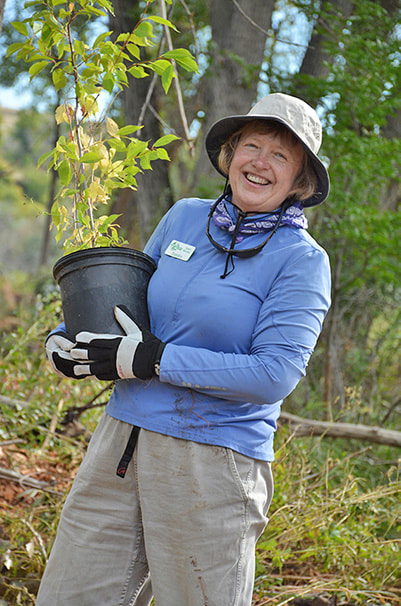 By SANDRA LAURSEN In 2017 my women’s chorus, Resonance Women’s Chorus of Boulder, learned a piece called “Where the Music Comes From,” with words and music by Lee Hoiby: I want to be where the music comes from, Where the clock stops, where it’s now. I want to be with the friends around me, Who have found me, who show me how. I want to sing to the early morning, See the sunlight melt the snow. And oh, I want to grow. 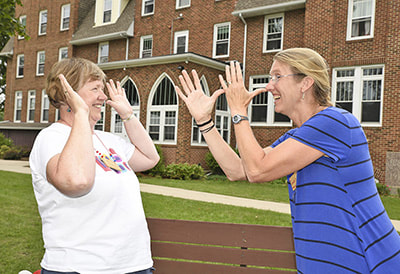 I want to wake to the living spirit Here inside me where it lies. I want to listen till I can hear it, Let it guide me, and realize That I can go with the flow unending, That is blending, that is real, And oh, I want to feel. I want to walk in the earthly garden, Far from cities, far from fear. I want to talk to the growing garden, To the devas,* to the deer, And to be one with the river flowing, Breezes blowing, sky above, *In the Hindu tradition, devas are spirits of nature, embodying forces for all living beings.
The song’s sentiments, phrases such as “the living spirit,” and the composer’s name caught my eye as suspiciously Grundtvigian. With a bit of research I learned that Hoiby indeed had Danish roots. His great-grandfather was a violinist in Denmark, and his piano teacher Gunnar Johansen was born in Copenhagen. Hoiby (1926-2011) was born in Wisconsin and educated at the University of Wisconsin-Madison, Mills College, and the Curtis Institute of Music, where he studied with Gian-Carlo Menotti. Menotti produced Hoiby’s first opera at the Spoleto Festival, thus launching a career as a pianist and composer of operas, art songs, and choral works. Throughout his career, Hoiby firmly resisted atonal and minimalist music that was popular in the 1960s. Critics called his music “simple, romantic, traditional, and cosmopolitan,” and saw him as a throwback. His lack of willingness to follow current musical fashion meant his career never really caught fire. But singers adored his compositions: the great diva Leontyne Price championed Hoiby’s works and sang them many times. “Singers, you can’t fool them,” said Hoiby. “When they hear a song, they can tell right away if it’s going to make them sound good. And mine do.” Among Hoiby’s better known works include Summer and Smoke, an opera based on the Tennessee Williams play I believe “Where the Music Comes From” was influenced by Hoiby’s Danish roots and the ideas of 19th century pastor and philosopher N.F.S. Grundtvig (1783-1872). Grundtvig challenged the standard Calvinist doctrine of the time to say that people should not be focused on the afterlife: Don’t go around being pious just to get into heaven but live in the here and now. Heaven is on earth –– in the natural world and in the love and fellowship with others that we experience in community. When we receive the big and marvelous gift of life on this planet with an open heart, we experience the divine in being joyful and grateful in our daily lives –– this is the “living spirit” inside us all. While Grundtvig couched these ideas in Christian terms, they resonate with many other spiritual traditions. As my yoga teacher says, Live in the present. Be here now. My family attends summer folk camp at Danebod Folk School, a week of fellowship and lifelong learning. When I sing “I want to be where the music comes from,” I visualize the morning sun streaming into the hundred-year-old music hall at Danebod, where we begin to “sing to the early morning” at 8:45 am. “The clock stops” as over and over we choose old favorites from World of Song; those folk songs have the same lilt to my ear as the up-and-down waltz rhythm of “Where the Music Comes From.” In 2017, when my sister and I were August folk camp directors, we included this song on the song sheet, because it fit our camp spirit so very perfectly. This year’s August camp theme, “Joy of Living,” brought Hoiby’s song to mind again. His lyrics urge us to plunge into the wide stream of life, to join “the flow unending.” His vision is one of harmony with nature but, importantly, it is not escapist: we find solace and inspiration in nature, but also in human community, whether by singing, growing gardens, or walking in them together. At folk camp, the friends around me “show me how”— when they teach a new dance, demonstrate a new crafting skill, or challenge my ideas in morning discussion, but also when they model activism against injustice or embody graceful living in the face of grief, aging, and change. Music is integrally bound with the joy of living. Hoiby liked to quote Haydn’s statement that music is “balm for the soul after a hard day’s work.” He felt that music must be “a song from the heart… full of feeling, [making] you feel the rhythm of it that goes along with the rhythm of life, which begins with the beating of the heart.” We all live where the music comes from. Sources:
[email protected]
0 Comments
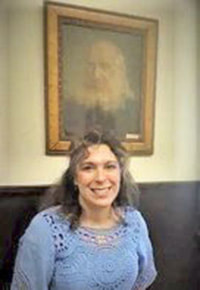 By PASTOR GENA MARIA KOEBERL Danebod Lutheran Church, Tyler, MN I believe in God, the Father Almighty, creator of heaven and earth When we recite the Apostles’ Creed we are joining with Christians across time and space. I remember one day I was visiting a seminary in Northern Tanzania when I heard a classroom reciting the Apostles’ Creed in Swahili. Later I heard it again in the Maasai language at a church service among Maasai villagers. How did I know? There was a rhythm and universal cadence that is across language barriers, that we all share. It’s interesting that this universal creed it is not worded “We believe,” but “I believe.” I believe in God. There is a saving grace to that pronoun because even though this is a universal confession, it is also giving us permission to state our own beliefs. The Creed, called the Apostles’ Creed, is not a production of the apostles themselves, but a brief summary of their teachings. The creed is attributed to the earliest missionary followers of Jesus and provides a basic outline of what it means to be a Christian. It is a short summation of the depth and richness it proclaims. It sets forth a doctrine of what we believe. The first thing we determine for ourselves is whether we believe in God. “I believe in God.” There are a lot of people who never get that far. We have no scientific technique that proves the existence of God nor do we have a foolproof method to determine there is no God. (2004, Anne Roberson) When we recite the words “I believe...” it is not just an intellectual act. The Latin word Credo or “I believe” involves more than our brains. A better translation may be, “I put my trust in.” The Hebrew word for “believe” is “aman” and is the word for the relationship between a foster parent and child. This is a relationship of trust and loving dependence. (2019, Working Preacher, Karl Jacobson) Once we establish that we are putting our trust and love into God, we learn this is a Relator God. God the Father, God the creator of heaven and earth. We’re not talking about an abstract concept, an ethereal spirit hiding in the universe, watching from a distance. We trust a relator, a creator, a parent God. We are part of the Creation God has made, which makes us different from God, and yet God created us as a parent creates a child, which also means we share God’s “DNA.” We are the thumbprint of God. Genesis puts it that we are made in the image of God and later Biblical passages say that we are sons and daughters of God. N.F.S. Grundtvig, a great influencer of the Danish and Danish American Lutheran Churches and of the Folk School movement, believed the living word of God was each human life and how we lived out our humanity in the image of God, as creations of God, carriers of God’s “DNA.” It was through the confessions of belief that we are enabled to understand the biblical word of God, making it a living word through the human experience of God. Grundtvig states his view of humanity as a “divine experiment of dust and spirit.” He said of the Apostles’ Creed, “How did I become a member of the Church? By Holy Baptism. On what condition? On the condition that I should renounce the devil, all his works, all his essence, and believe in the Father, the Son, and the Holy Ghost, as it is set forward in the Apostles’ Creed. Everybody who has this faith, to him the Holy Ghost opens the mysteries of the Holy Scripture, and he can understand them;” He believed that the Apostles’ Creed was key to understanding the New Testament as both were given by the same Holy Spirit. The motto, “Human comes first, and Christian next” is a central expression of Grundtvig’s creation theology. The Danish can also be translated, “Be first a human, and then be a Christian in accordance herewith,” thus pointing to the demand to fulfil our human destiny in faith, hope, and love. His creation theology spoke of humans being the image of God, Imago Dei and also succumbing to the inverted sin of self-centered, or turning in on oneself, Imago Sui; and that human beings are also to be understood from their embeddedness in the created cosmos, as an imago Mundi. We are microcosms of the wider macrocosm, both as sensory and as spiritual beings. That all is interconnected. (Human Comes First: The Christian Theology of N.F.S. Grundtvig, Edward Broadbridge, ed., Aarhus Universitetsforlag, Jul 31, 2018) All this is quite remarkable when you consider it was written in the 19th century and much of our eco-theology awareness did not become prominent until the 1960s, especially in America. One such concept is that of Ecological Sin. Ecological sin is the refusal to act in the image of God, to defy God’s covenant of justice by grasping more than our due, breaking our bond with God and others in creation. It is acting like the owner of creation with absolute property rights. The truth is we are guests invited by the host to participate. When God created, it was a joy. We are called to be co-creators with God. That means no one is unimportant. The ecological crisis of our age is a responsibility for everyone. Everything we do either draws the Kingdom of Love closer or pushes it away. Too often we want to let somebody else do it, the preacher, the teacher, the government agency. The care of earth is part of all our responsibility. Now is when we need to make choices that transcend our self-interests and our political partisans. Sally McFague in her book “Life Abundant: Rethinking Theology and Economy for a Planet in Peril” suggests resisting a culture of limitless consumerism and converting our lives to a philosophy of “enough-ness.” That calls for a different view of abundance and abundant life. Living “enough-ness” claims that housemates here on earth must abide by three main rules: 1. Take only your share; 2. Clean up after yourselves; 3. Keep the house in good repair for future occupants. Today there is a new poor, the earth. Jesus said to a lawyer who asked what can be done to gain eternal life, “Love God, love your neighbor.” Who is my neighbor? Jesus tells the lawyer a story about a man who walks a treacherous road and is beaten and robbed. A priest walks past him. Then a lawyer walks past him. Finally, an outsider, who is the most unlikely person to care, stops and helps. This outsider disregards his own safety and gets off his donkey to go into the ditch, bandage the man’s wounds, and bring him to shelter. Then Jesus asks, “Who is the neighbor?” All respond, “the man who helped.” Jesus says go and do the same. A neighbor in the ditch is one who is in need and may not be the most convenient or comfortable to help. In fact, your neighbor in need may not be a human being. Creation is our neighbor. It is time we take care of the new poor, the earth. We have a responsibility, being created in God’s image, to be a good neighbor to God’s greatest joy, God’s creation. It was timely that we talked about the Apostles’ Creed during the Fall Folk Meeting at Danebod Folk School. There are themes from the folk school tradition of adult, progressive and informal education that fit such a series. Emphasis on fellowship of living and working together, the importance of the “living word,” the stress on common humanity and education as a “living interaction” –– a coming to terms with the meaning of one’s own existence and co-existence. Learning to live, not just make a living. Indeed, everything we know, experience, believe, and imagine is because of God. What we say, do, touch, and think leaves a mark on the earth. You matter. We all matter. We are touched and blessed by the creator of everything and we are God’s greatest joy. And so I end with a bit of wisdom for living out our response to the belief in God our relator, creator God, from the poem “All I Really Need to Know I Learned in Kindergarten” by Robert Fulghum, published in the Kansas City Times, September 17, 1986. Most of what I really need to know about how to live, and what to do and how to be, I learned in kindergarten. Wisdom was not at the top of the graduate school mountain but here on the sandbox at nursery school. These are the things I learned: Share everything. Play fair. Don’t hit people. Put things back where you found them. Clean up your own mess. Don’t take things that aren’t yours. Say you’re sorry when you hurt somebody. Wash your hands before you eat. Flush. Warm cookies and cold milk are good for you. Live a balanced life. Learn some and think some and draw and paint and sing and dance and play and work every day some. Take a nap every afternoon. When you go out into the world, watch for traffic, hold hands, and stick together. Be aware of wonder. Remember the little seed in the plastic cup. The roots go down and the plant goes up and nobody really knows how or why…but we are all like that. Goldfish and hamsters and white mice and even the little seed in the plastic cup –– they all die. So do we. And then remember the book about Dick and Jane and the first word you learned, the biggest word of all: LOOK.Everything you need to know is in there somewhere. The Golden Rule and love and basic sanitation. Ecology and politics and sane living. Think of what a better world it would be if we all –– the whole world –– had cookies and milk about 3 o’clock every afternoon and then lay down with our blankets for a nap. Or if we had a basic policy in our nation and other nations to always put things back where we found them and cleaned up our own messes. And it is still true, no matter how old you are, when you go out into the world, it is best to hold hands and stick together. [email protected] 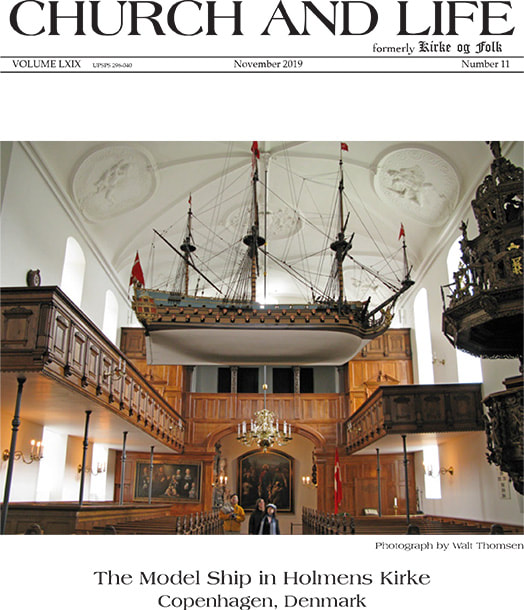 November 2019 Highlights So much to be thankful for –– in just this one issue –– I am: Thankful for our Grundtvigian heritage which helps us deal with world chaos realistically but also with optimism. Thankful for pastors! –– Pastor Gina Maria Koeber gives her thoughts on the Apostles Creed, the summary of what Christians believe. Welcome Pastor Gina, who began her ministry at Danebod Lutheran Church in March of this year. Pastor Gina has many talents, as shown in her performance at the Opera House in Lake Benton this summer. Thankful for ship models in our Danish churches! –– THE SUPERB is the Swedish model ship which negotiates the deep waters of Christ the King Lutheran Church in Houston TX. The story of the ship is provided by Kirsten Drigsdahl from Denmark with notes added by Bridget Jensen, Jr from Houston. I am indeed thankful for Bridget who will be the interim editor of Church and Life. Bridget has been on the board of the Danish Interest Conference for several years. The Danish church ship model at Luther Memorial Church in Des Moines, IA is named “HJEMAD,” which means “Homeward.” Pastor Russell Lackey writes of the different meanings of ship symbols to members of the congregation and to Grand View University Students. We also have the Cathedral ship in Arhus, DK from Dagmar Muthamia. Thankful for Music! –– We have three articles about the importance of music. Sandra Laursen of Boulder CO writes about “where the music comes from” to bring up the “living Spirit” of joy and gratitude for each of us to experience in our daily lives. Susan introduces us to Lee Hoiby, a composer she researched of Danish heritage. Sandra is the daughter of Paul and Carol Laursen. Hanna Broadbridge of Randers, Denmark knows there is magic in group singing which is going to be encouraged throughout Denmark in the coming year. Alsang 2020 is a new movement encouraging more group singing throughout Denmark! The Grundtvig prize of 25,000 DKK has just been awarded to translator Edward Broadbridge and pianist Rasmus Skov Borring for encouraging and increasing the singing of Grundtvig’s hymns and songs. Congratulations Edward and Rasmus on this prestigious award. AND Thank you, N.F. S Grundtvig! Margaret Johnson of Portland OR expresses what music means to her –– health and happiness! She was inspired by “Sing,” Carrie Newcomer’s poem which was published in the Holden Village Voice. Thankful for Danebod! –– folk meetings, family camps, and for all Danebod means historically, now and to the future. A photo page in this issue shows some of the presenters at the 2019 Folk Meeting. Hopefully you can catch some of the folk meeting’s enjoyment by simply looking at the photographs! AND Most of all I am thankful for you –– the readers, writers and subscribers of Church and Life! - Ji The Cover: On the cover is a photograph by Walt Thomsen of the large model ship in the Church of Holmen (Danish: Holmens Kirke) a Parish church in central Copenhagen, Denmark, located on Holmens Kanal. First built as an anchor forge in 1563, it was converted into a naval church by Christian IV. (See Wikipedia, Church of Holmen. It was Walt’s grandfather who crafted the model ship at Danebod Lutheran Church in Tyler, MN. Whitey Jorgensen of Minneapolis reminded me of Garrison Keillor’s comment when he spoke at the Danebod folk meeting in Tyler in 1985, “Only the Danes on the verge of South Dakota would have a ship in their church.” Save the Dates Bethania Lutheran Church, Solvang, CA, February 21-23, The Solvang Folk School Talks, a new program led by Pastor Chris Brown will feature Michael Gungor and Mike McHargue, founders of the Liturgists Podcast, one of the top religious podcasts in the country. See fmlectures.org or www.theliturgists.com or contact Bethania Lutheran Church (805) 688-4637. Announcement Bridget Jensen, Jr. of Houston, TX is the new Interim editor of Church and Life beginning January 1, 2020. Bridget has been on the board of the Danish Interest Conference since 2009. She has attended several folk meetings at Danebod and presented a lecture, “Witnessing Palestine,” about her February 2019 return trip to Israel/Palestine where she visited the Occupied Territories. Most recently she has been involved in celebrating the 125th Anniversary of Danevang, Texas. Beginning with the January issue of Church and Life, submissions should be sent to Bridget Lois Jensen, Jr., 1920 W. Clay, Houston TX 77019. Phone number 713-524-1290. Email: [email protected]. The deadline for the January issue is December 20. Perodic postage paid at Askov, MInnesota 55704. Postmaster: Send address changes to Wanda Clark, Bus. Mgr, 123 NW 7th Street, Grand Rapids, MN 55744-2639. Subscriptions Rate $20 per year (U.S.A.) $35 for Canada and $60 for De- namrk (hard copies). Electronic subscriptions available to Cana- da and Europe for $20. Subscription payments or gifts and me- morials should be sent to the Business Manager. www.churchandlife.org You can subscribe, renew subscriptions and/or make gifts on line. Simply go to our website and click on Subscriptions/Gifts. To visit the Church and Life archives at Grand View University library, go to the link, http://archives.grandview.edu. |
Editor InformationBridget Lois Jensen Archives
March 2023
|
Subscribe | Gift |
Submit an Article |
Contact |
© COPYRIGHT 2019 CHURCH AND LIFE.
|
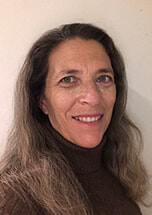
 RSS Feed
RSS Feed